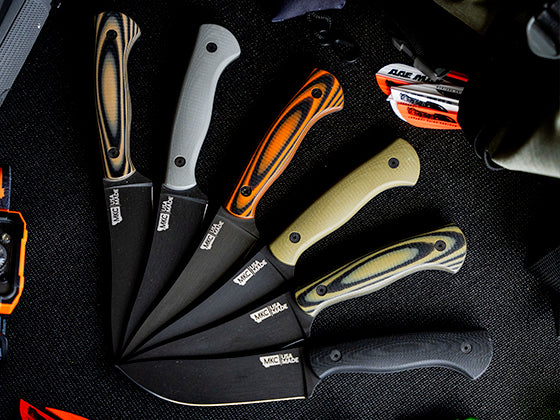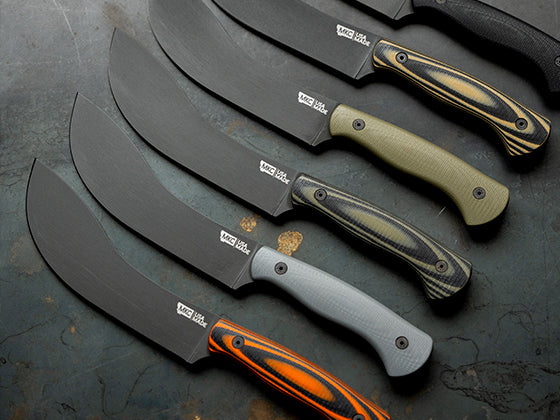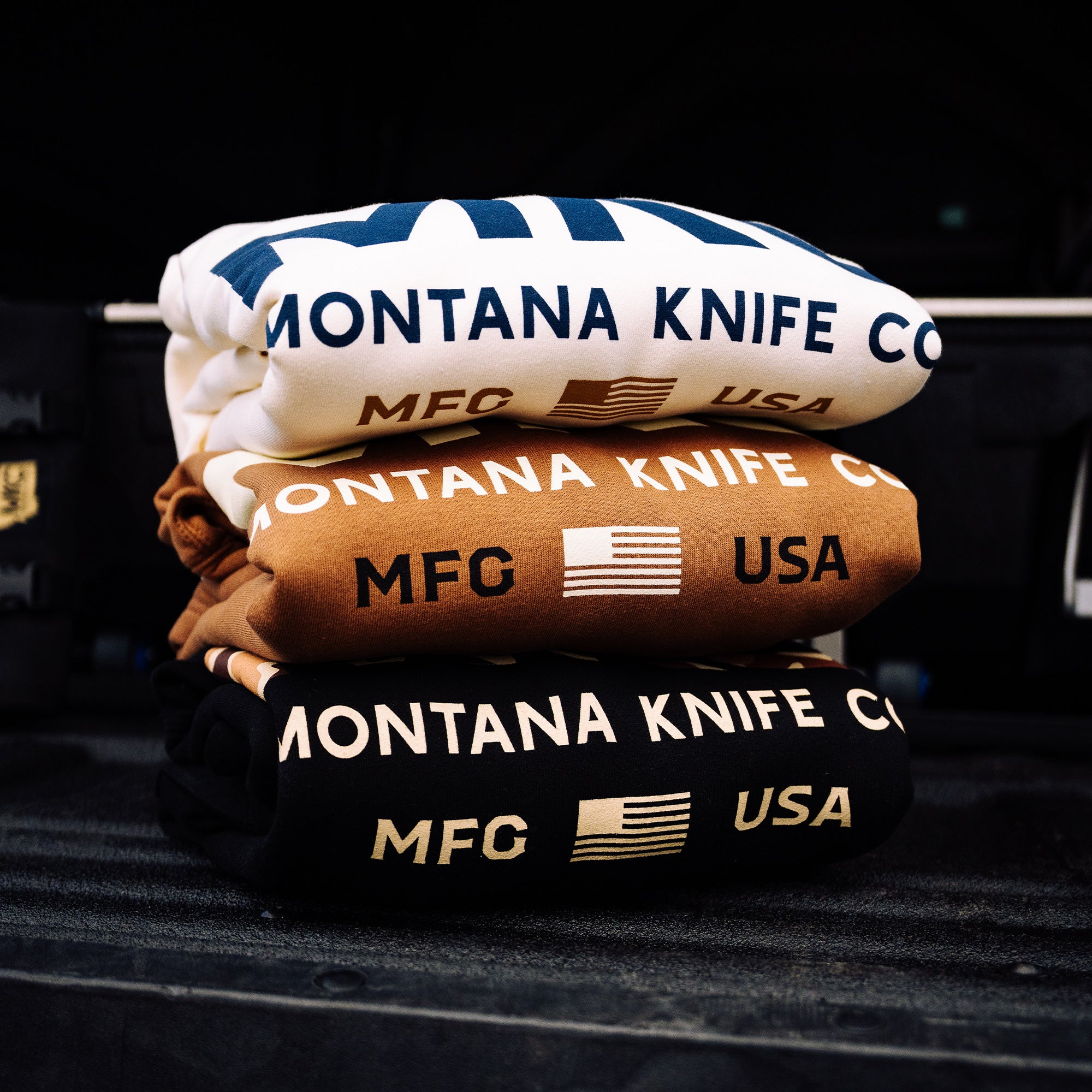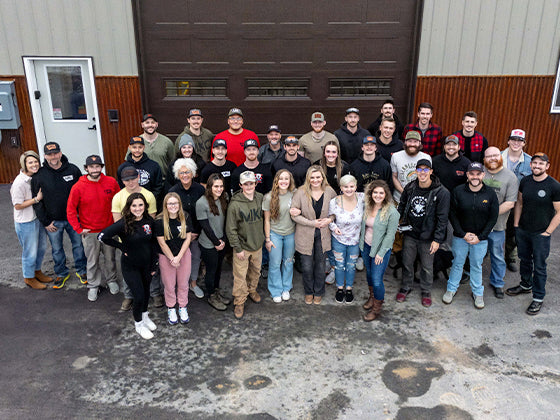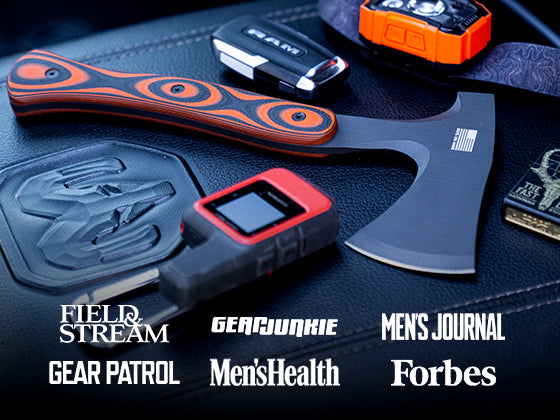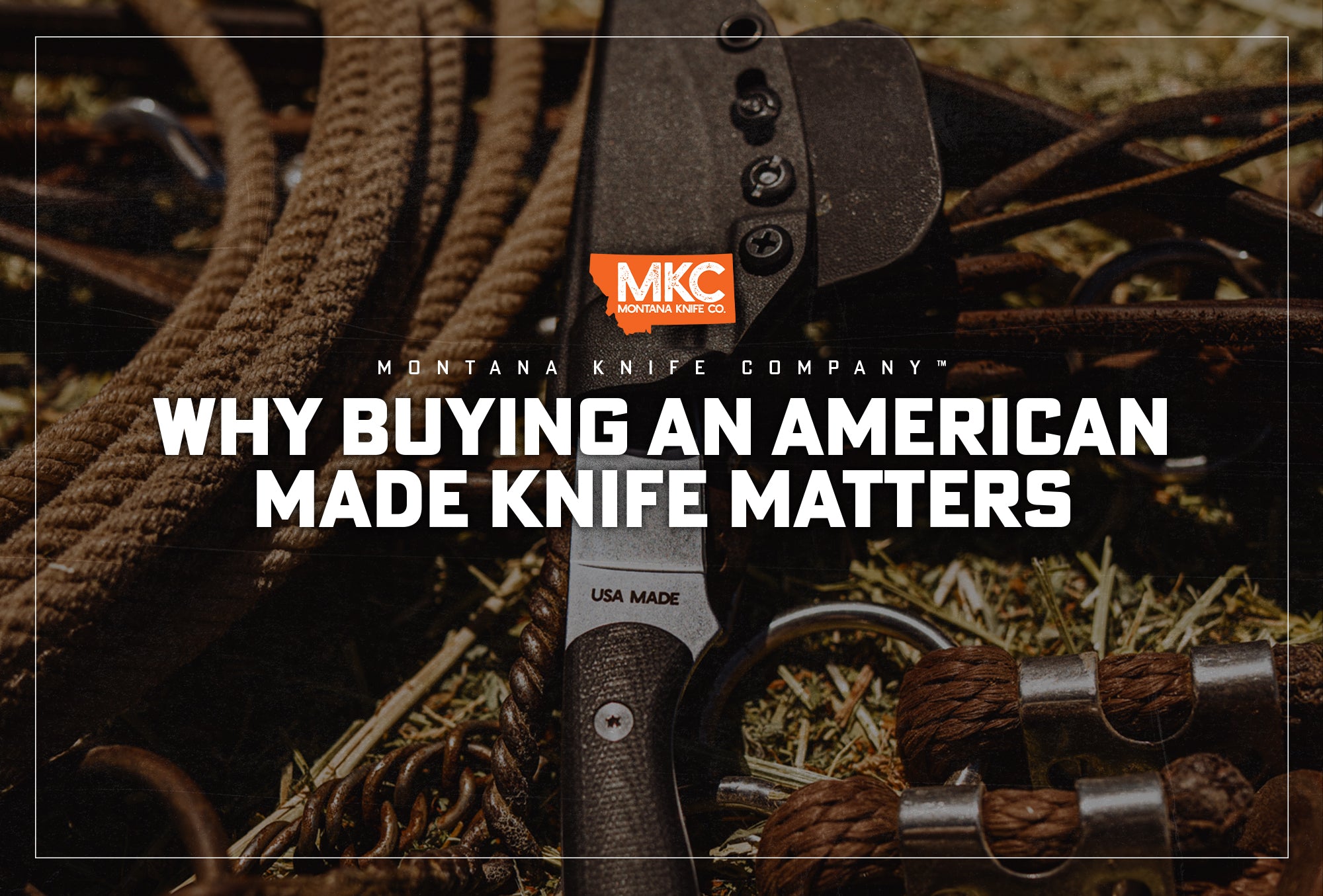On its own, a knife has a million different uses — but one of the things we love about our ever-popular Speedgoat is the additional functionality of the paracord handle. It adds strength, versatility, and comfort without adding too much weight.
When we were designing the Speedgoat, we wanted to make sure we kept it as ultralight as possible. We played around with the idea of wrapping it in rawhide, which is very lightweight and would give the Speedgoat a nice vintage look. But the rawhide didn’t add a lot of functionality.
We also experimented with drilling holes into G10 and carbon-fiber handles. Finally, we considered not putting anything on the steel and opting instead for a Cerakoted blade with no handle at all.
In each of these cases, we would achieve the ultralight weight we were looking for, but we would add zero additional functionality.
But paracord? That adds a ton of advantages, and all for the low, low price of half an ounce of added weight.
A Million Uses and Counting
One of the best things about manufacturing the Speedgoat is that we get to hear all the different ways knife owners use the paracord. Here’s an incomplete list of just a few of those uses:
You can pull the paracord apart and, with a sewing needle, use the inner strands to stitch something together — your clothes, the tent, potentially even your own skin. The center cord of the paracord also works as a makeshift fishing line (fishing hook not included).
In a worst-case scenario, you can use the paracord to rappel or lower yourself down from a rock or cliff. It’s rated to support 550 pounds.
If needed, you can rig up a sling using paracord to stabilize a broken arm, or use as a replacement for the ever-annoying busted boot lace.
At a campsite, you can use it to guy out a tent, hang a light, or stretch a drying line for wet gear and clothes.
You can also use it to repair your shelter, bundle up firewood, or hang meat where animals can’t reach.
If some of the hardware on your rifle sling busts, you can rig a new sling with paracord to free up a hand, which is especially handy when packing out an animal.
You can use the paracord to tie meat or antlers more securely to your pack. Some people like to cut a tree branch and lay it across their pack, then tie the antlers to the branch to keep them from flopping around.
If you have to survival know-how to do so, you can use your paracord to build a bow drill and start a fire.
A Speedgoat owner told me he once used his paracord to cinch his rain pants tight around his boots when he was crossing a river. That’s a great application to keep water out of your boots.
If you’re driving out of the mountains, you can use your paracord to secure loads inside or on top of your vehicle. This works well when you have horns you don’t want to get damaged, or if you have a cooler you don’t want sliding around.
In a survival situation, you can also rig up a temporary shelter, set up a tripwire trap to catch food, or tie off a tourniquet to stop bleeding.
(An important note on the tourniquet: This is only in a worst-case, life-or-death scenario. Paracord will damage your tissue very quickly since the pressure is so concentrated. We strongly recommend carrying an actual tourniquet in your pack for emergencies.)

An All-in-One Blade
Thanks in part to its incredibly versatile paracord handle, the Speedgoat is an all-in-one survival tool. Every Speedgoat comes wrapped in seven feet of paracord, including the Mini-Speedgoat.
We look forward to hearing about how you use your paracord on your next adventure. Remember, the only limit is your imagination!
by Josh Smith, Master Bladesmith and Founder of Montana Knife Company



